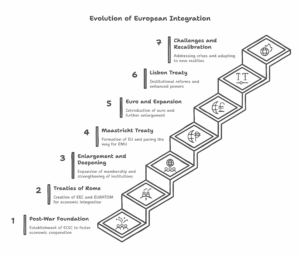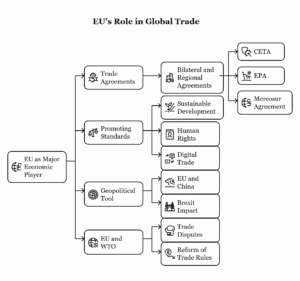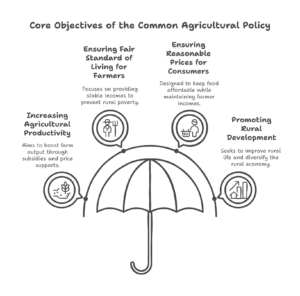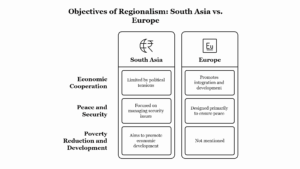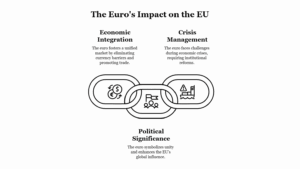-
Continue reading →: Grievances of Western Provinces in Canada
The Western Provinces of Canada—namely British Columbia, Alberta, Saskatchewan, and Manitoba—have historically had a distinctive economic and cultural identity that sometimes places them in tension with the central government in Ottawa and the more populous Eastern provinces like Ontario and Quebec. These grievances stem from a variety of political, economic,…
-
Continue reading →: Ethnic Groups in Canada
Canada is often referred to as a “mosaic” rather than a “melting pot” because of its diverse population, composed of people from many different ethnic backgrounds. Ethnic groups in Canada represent the cultural, linguistic, and religious diversity that defines the nation. This diversity has been shaped by waves of immigration…
-
Continue reading →: Quebec Nationalism
Quebec Nationalism refers to the political, cultural, and social movement that advocates for the interests of the Quebecois people, focusing particularly on the protection and promotion of French-Canadian culture, language, and identity within Canada. This movement has evolved over time, with the central objective of ensuring that Quebec, a province…
-
Continue reading →: White immigrant groups in Canada
Canada has a long history of immigration, with diverse communities contributing to the country’s social, cultural, and economic fabric. Among these immigrant groups, white immigrant groups have played a significant role in shaping the nation’s identity, particularly in the development of early Canadian society. Historically, these groups have predominantly come…
-
Continue reading →: Role of pressure groups in Canada
Pressure groups (also known as interest groups or lobby groups) play a significant role in the Canadian political system by influencing public policy, representing the interests of specific groups, and promoting particular issues within the political arena. These organizations operate outside the formal structures of government, yet they actively engage…
-
Continue reading →: Phases of the evolution of Canadian federation
The evolution of Canadian federalism is a complex and dynamic process shaped by historical, political, and social factors. It involves the development of the federal system of government in Canada, which has undergone several significant phases since its inception in the mid-19th century. Canada’s federation, formally established with the British…
-
Continue reading →: Judicial system in Canada
The judicial system in Canada is characterized by its independence, impartiality, and commitment to the rule of law. As a democratic country governed by the rule of law, the judicial system ensures that all individuals, regardless of status, are subject to the law. The Canadian judiciary operates within a federal…
-
Continue reading →: Constitutional safeguards for the protection of minorities in Canada
Canada’s commitment to protecting minority rights is firmly embedded in its constitutional framework, ensuring that ethnic, cultural, linguistic, religious, and other minority groups are afforded protections against discrimination and inequality. The country’s legal system, based on liberal democratic principles, seeks to create a society where all individuals can enjoy equality,…
-
Continue reading →: Nature of multiculturalism in Canada
Multiculturalism is one of the defining characteristics of Canadian society, a central element of its national identity and public policy. In Canada, multiculturalism refers not only to the visible presence of diverse ethnic, cultural, and religious groups but also to the country’s political commitment to embracing and fostering this diversity.…
-
Continue reading →: Role of language in nationalism in Canada
Language plays a central and multifaceted role in shaping nationalism in Canada, a country characterized by its bilingual nature and the distinct cultural identities of its provinces, most notably between English-speaking Canadians and French-speaking Canadians. The role of language in Canadian nationalism is primarily influenced by the country’s colonial past,…
-
Continue reading →: Characteristics of the anti-globalisation movement in Canada
The anti-globalization movement in Canada is part of a broader global trend of resistance against the negative impacts of economic globalization. This movement emerged in the late 20th century, particularly in the context of neoliberal economic policies, free trade agreements, and the influence of multinational corporations. It reflects concerns about…
-
Continue reading →: Features of the party system in Canada
The party system in Canada is a critical aspect of its political structure, which facilitates the functioning of democracy by organizing political ideologies and providing citizens with choices in elections. Canada’s political landscape is dominated by a multi-party system, where several political parties compete for power at the federal and…
WELCOME!
Yearly Archive
Categories List
- biodiversity
- Canada
- culture
- democracy
- economy
- European Union
- ignou
- india
- International Relations
- nature
- news
- political-philosophy
- political-science
- sustainability
- Uncategorized
- UPSC
Tag Cloud
agriculture ai business Canada china climate climate-change conservation diversity ethics european-union farming feminism finance gandhi health history ignou india KNOWLEDGE liberty mahatma-gandhi marxism nationalism nonviolence philosophy political-philosophy political-science political-theory politics poverty PSC religion renewable-energy russia socialism sociology sustainability sustainable-agriculture sustainable-living technology terrorism travel UPSC women
Term List
- africa
- agriculture
- ai
- aristotle
- bangladesh
- bjp
- business
- Canada
- china
- christianity
- climate
- climate-change
- conservation
- critical-theory
- digital-marketing
- diversity
- ecology
- elections
- ethics
- europe
- european-union
- faith
- farming
- fascism
- featured
- feminism
- feminist
- finance
- frankfurt-school
- freedom
- fundamentalism
- gandh
- gandhi
- gardening
- gender
- gender-equality
- global-warming
- government
- health
- herbs
- history
- human-rights
- ignou
- india
- inequality
- intellectual-property
- italy
- karl-marx
- KNOWLEDGE
- language
- law
- learning
- lenin
- liberty
- lifestyle
- linguistics
- mahatma-gandhi
- marx
- marxism
- mental-health
- MPS
- multicultural
- multiculturalism
- nationalism
- natural-remedies
- nonviolence
- organic-farming
- patents
- philosophy
- political-philosophy
- political-science
- political-theory
- politics
- pollution
- poverty
- PSC
- recycling
- religion
- renewable-energy
- russia
- socialism
- sociology
- soviet-union
- spirituality
- sustainability
- sustainable-agriculture
- sustainable-living
- teaching
- technology
- terrorism
- trademarks
- travel
- UPSC
- water
- water-conservation
- wellness
- wildlife
- women
- women-empowerment
